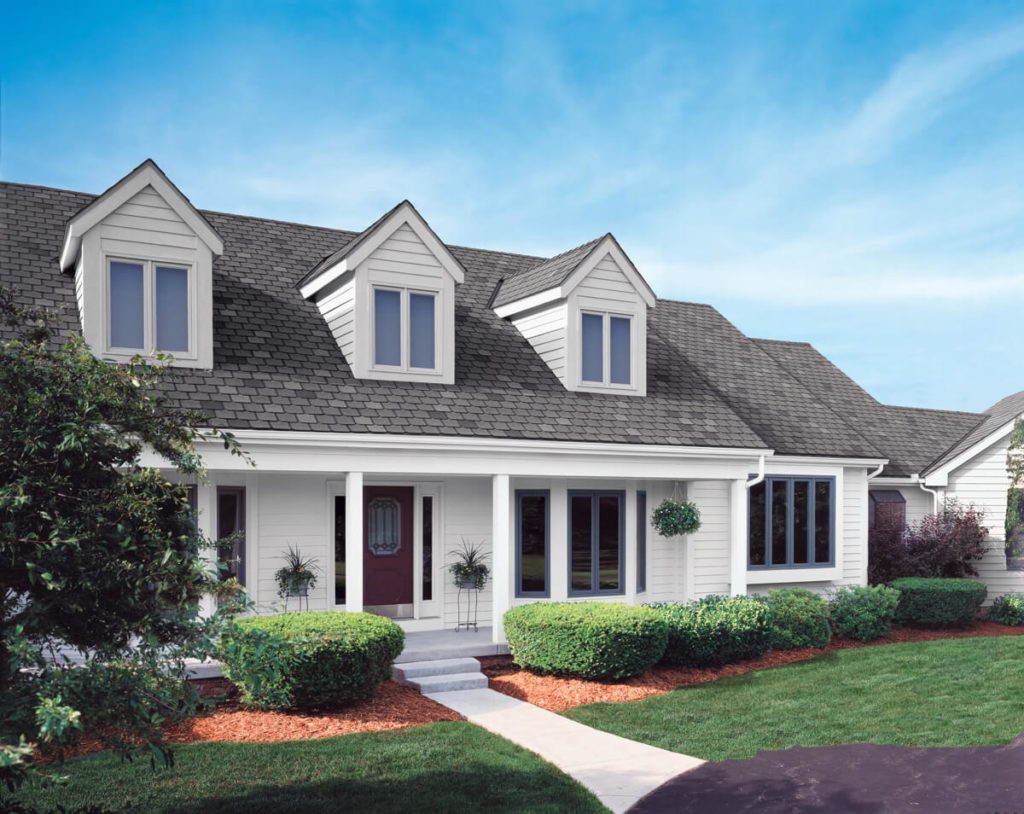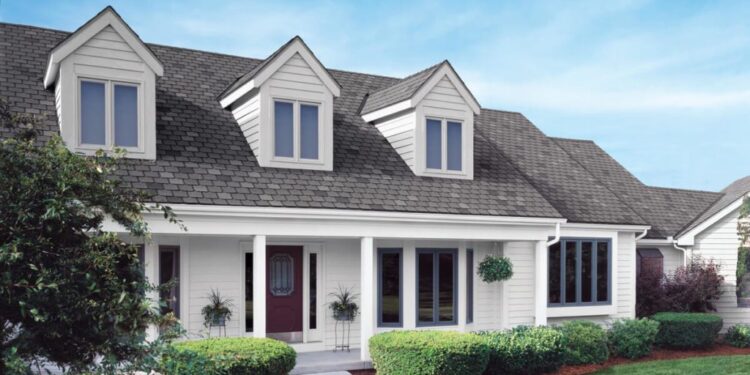Delving into the world of roofing and siding services, this introductory paragraph aims to pique the interest of readers with a glimpse into the diverse materials, installation processes, and maintenance practices in the industry.
Providing valuable insights and tips, this paragraph sets the stage for an informative discussion on enhancing the longevity and aesthetics of roofs and sidings.
Roofing Services
When it comes to roofing services, understanding the different types of roofing materials commonly used in the industry is essential. From asphalt shingles to metal roofing, each material offers unique benefits and characteristics that cater to different needs and preferences.
Types of Roofing Materials
- Asphalt Shingles: One of the most popular choices due to its affordability and versatility.
- Metal Roofing: Known for its durability and longevity, making it a great investment for homeowners.
- Wood Shingles: Provides a rustic and natural look, but requires more maintenance compared to other materials.
- Clay Tiles: Offers a distinctive appearance and excellent durability, ideal for warmer climates.
- Slate Roofing: Known for its elegance and longevity, but comes with a higher price tag.
Roof Installation and Repair Process
- Initial Inspection: A thorough assessment of the roof to identify any issues or areas in need of repair.
- Material Selection: Choosing the right roofing material based on factors like budget, climate, and aesthetic preferences.
- Installation: Proper installation by experienced professionals to ensure a secure and long-lasting roof.
- Repair: Addressing any damage or leaks promptly to prevent further issues and extend the lifespan of the roof.
Importance of Regular Roof Maintenance and Inspections
Regular roof maintenance and inspections are crucial for ensuring the longevity and performance of your roof. By conducting routine checks and addressing any issues promptly, you can prevent costly repairs and prolong the lifespan of your roof. Additionally, proper maintenance can help identify potential problems early on, saving you time and money in the long run.
Siding Services

When it comes to siding services for residential and commercial buildings, there are various types of siding materials available to choose from. Each material comes with its own set of advantages in terms of durability, aesthetics, and suitability for different climates and architectural styles.
Types of Siding Materials
- Vinyl Siding: Vinyl siding is a popular choice due to its affordability, low maintenance, and versatility in terms of colors and styles.
- Fiber Cement Siding: Known for its durability and resistance to fire, moisture, and insects, fiber cement siding is a long-lasting option for buildings.
- Wood Siding: Wood siding offers a natural and classic look, but requires more maintenance compared to other materials. It can be prone to rot and pests if not properly maintained.
- Aluminum Siding: Aluminum siding is lightweight, durable, and resistant to rust. It is a good option for coastal areas due to its ability to withstand salt exposure.
Comparing Durability and Aesthetics
- For durability, fiber cement siding and aluminum siding are known for their longevity and resistance to elements like fire, moisture, and insects.
- When it comes to aesthetics, wood siding provides a timeless and natural look, while vinyl siding offers a wide range of colors and styles to choose from.
Choosing the Right Siding Material
- Consider the climate of your area when choosing a siding material. For example, wood siding may not be the best choice in humid climates where it is more prone to rot.
- Take into account the architectural style of your building. For a modern look, fiber cement siding or aluminum siding may be more suitable, while wood siding can complement traditional or rustic styles.
- Consult with a siding professional to discuss your specific needs and preferences before making a decision on the right siding material for your property.
Roofing and Siding Installation
When it comes to roofing and siding installation, there are specific steps and key factors to consider to ensure a successful project. Proper installation is crucial for the longevity and functionality of both the roof and siding of a building.
Steps in a Typical Roofing Installation Project
Roofing installation involves several key steps to ensure a durable and weatherproof roof:
- 1. Removing the old roofing materials carefully to assess the condition of the roof deck.
- 2. Repairing or replacing any damaged or rotted sections of the roof deck.
- 3. Installing underlayment to provide an additional layer of protection against water infiltration.
- 4. Applying the roofing material, whether it be shingles, tiles, or metal sheets, following manufacturer guidelines.
- 5. Adding flashing around roof penetrations, such as chimneys or vents, to prevent leaks.
- 6. Inspecting the final installation for any issues and ensuring proper ventilation.
Key Factors for Installing New Siding
Installing new siding involves considering several important factors to ensure a successful installation:
- 1. Choosing the right type of siding material that suits the climate and style of the building.
- 2. Preparing the exterior wall surface properly by removing old siding and repairing any structural damage.
- 3. Properly sealing and weatherproofing the siding joints and corners to prevent water infiltration.
- 4. Ensuring proper ventilation behind the siding to prevent moisture buildup and mold growth.
- 5. Following manufacturer guidelines for installation to maintain warranty coverage.
Ensuring Proper Insulation and Weatherproofing
Proper insulation and weatherproofing are essential during roofing and siding installation to enhance energy efficiency and protect the building from the elements:
- 1. Installing insulation in the attic space and ensuring proper ventilation to prevent heat loss and ice dams.
- 2. Applying a weather-resistant barrier under the siding to protect against water and air infiltration.
- 3. Using sealants and flashing around windows, doors, and other openings to create a watertight seal.
- 4. Regularly inspecting and maintaining the roof and siding to address any issues promptly and prevent costly repairs.
Maintenance and Repairs

Regular maintenance is essential to extend the lifespan of your roofing and siding, ensuring they remain in good condition for years to come. By identifying signs that indicate the need for immediate repairs, you can prevent further damage and costly replacements.
Here are some common maintenance practices, signs to look out for, and tips for DIY tasks or seeking professional help.
Common Maintenance Practices
- Inspect your roof and siding regularly for any visible damage, such as cracks, missing shingles, or loose siding panels.
- Clean debris, leaves, and branches off your roof and gutters to prevent clogging and water damage.
- Trim overhanging branches and trees that could potentially damage your roof or siding during storms.
- Check for signs of water stains or mold growth, which could indicate a leak in your roof or siding.
Signs for Immediate Repairs
- Water stains on your ceiling or walls.
- Missing or damaged shingles or siding panels.
- Visible cracks or holes in your roof or siding.
- Increased energy bills due to poor insulation caused by damaged roofing or siding.
DIY Maintenance Tasks and Professional Help
- For minor repairs like replacing a shingle or fixing a loose siding panel, you can attempt DIY tasks if you have the necessary tools and skills.
- However, for more complex issues like extensive water damage or structural problems, it's best to seek professional help from a roofing and siding contractor.
- Regularly schedule professional inspections and maintenance to catch potential issues early on and avoid costly repairs in the future.
Final Review

Wrapping up our exploration of roofing and siding services, we've covered a range of topics from materials to installation techniques. Hopefully, this comprehensive guide has shed light on the importance of proper maintenance and repairs for these crucial aspects of any building.
Top FAQs
What are the most common types of roofing materials used?
Common roofing materials include asphalt shingles, metal, wood, and tile. Each material has its pros and cons based on factors like durability and cost.
How do I know when my siding needs repairs?
Look out for signs like cracks, warping, or loose panels in your siding, as these indicate possible damage that requires immediate attention.
Can I perform my own roof maintenance tasks?
Simple tasks like cleaning gutters or inspecting for damage can be done by homeowners, but for complex issues or repairs, it's best to consult a professional.


